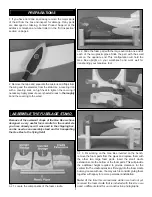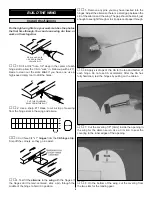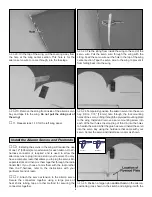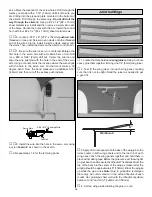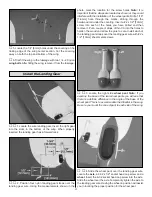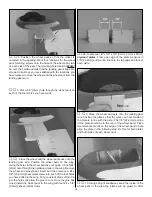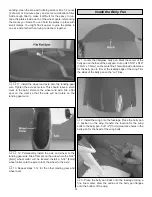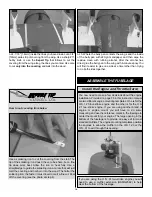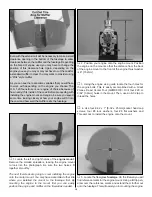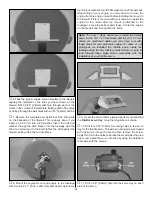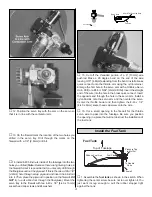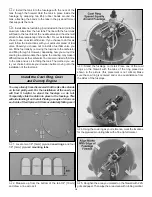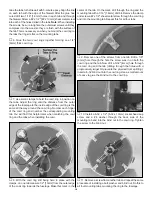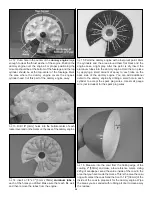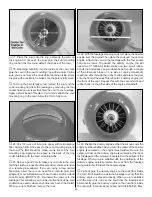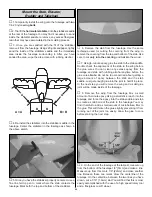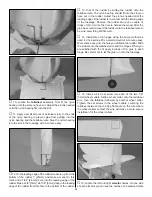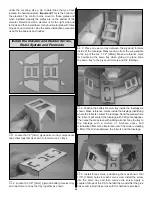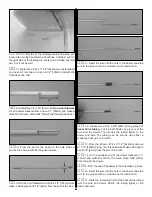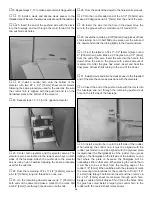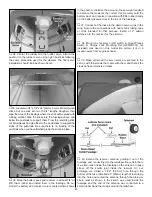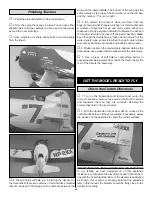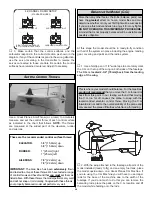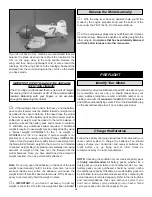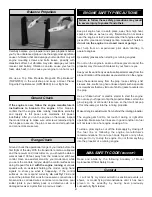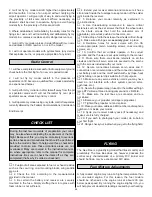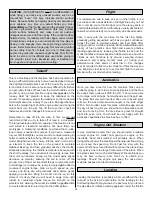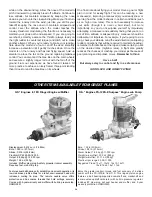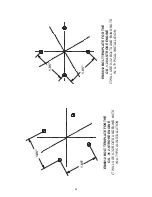
❏
17. Place the cowl onto the ring, centering the cowl on
the engine. Do not push the cowl onto the cowl mounting
ring too hard as this could deform the shape of the cowl.
❏
18. Reaching carefully into the inside of the cowl, tack
glue the cowl to the cowl mounting ring with medium CA. Be
sure you do not move the cowl while reaching inside. Spray
the glue with accelerator to make sure the glue is fully cured.
❏
19. Once the glue is fully cured, remove the cowl and the
cowl mounting ring from the fuselage by removing the four
socket head cap screws that hold the cowl to the fuselage.
Apply a small bead of medium CA to firmly attach the cowl
mounting ring to the cowl. Allow the CA to fully cure.
❏
20. Mix 1/4 ounce of 6-minute epoxy with microballoon
filler. Apply a fillet of the epoxy to the cowl mounting ring and
the cowl. The fillet should be made on the front of the cowl
mounting ring. Applying the epoxy to the back of the ring
could interfere with the cowl mounting tabs.
❏
21. Now is a good time to make any cut-outs in the cowl
for things such as a needle valve extension, choke extension
or a remote glow adapter. If you are using a long-necked
Nicd glow driver there is no need for a remote glow plug
adapter. For our installation we chose to use a Sullivan Head
Lock Remote (MODP1221). Re-install the cowl onto the
fuselage. This will allow you to look into the front of the cowl
to determine exactly where any holes may have to be drilled.
When you have finished, remove the cowl.
❏
22. With the fuselage standing on its tail, place the dummy
engine over the engine. Then place the cowl over the dummy
engine. Attach the cowl to the fuselage with the four socket
head cap screws. To position the dummy engine you will
need two 9" [229mm] balsa sticks and two small rubber
bands (not included). Loop a rubber band through a couple
of the aluminum tubes on one side of engine crankshaft.
Insert the stick through the rubber bands and place the stick
onto the front of the cowl. This will pull the dummy engine into
the front of the cowl. Repeat this with the second stick and
rubber band on the other side of the engine crankshaft.
❏
23. Position the dummy engine so that the cut out is over the
engine cylinder and the hole you cut in the center of the dummy
engine is centered on the engine thrust washer. Be sure the
center cylinder on the dummy engine is centered at the top of
the fuselage and the oil sump is centered on the bottom of the
fuselage. When you are satisfied with the positioning of the
dummy engine, carefully remove the cowl from the fuselage
being careful not to disturb the dummy engine.
❏
24. Tack-glue the dummy engine to the cowl from inside
the cowl. Re-install the cowl to the fuselage to verify that the
dummy engine is placed properly. When you are satisfied
with the way it fits, remove the cowl from the fuselage and
permanently glue the dummy engine to the cowl from inside
the cowl with 6-minute epoxy mixed with microballoon filler.
21

